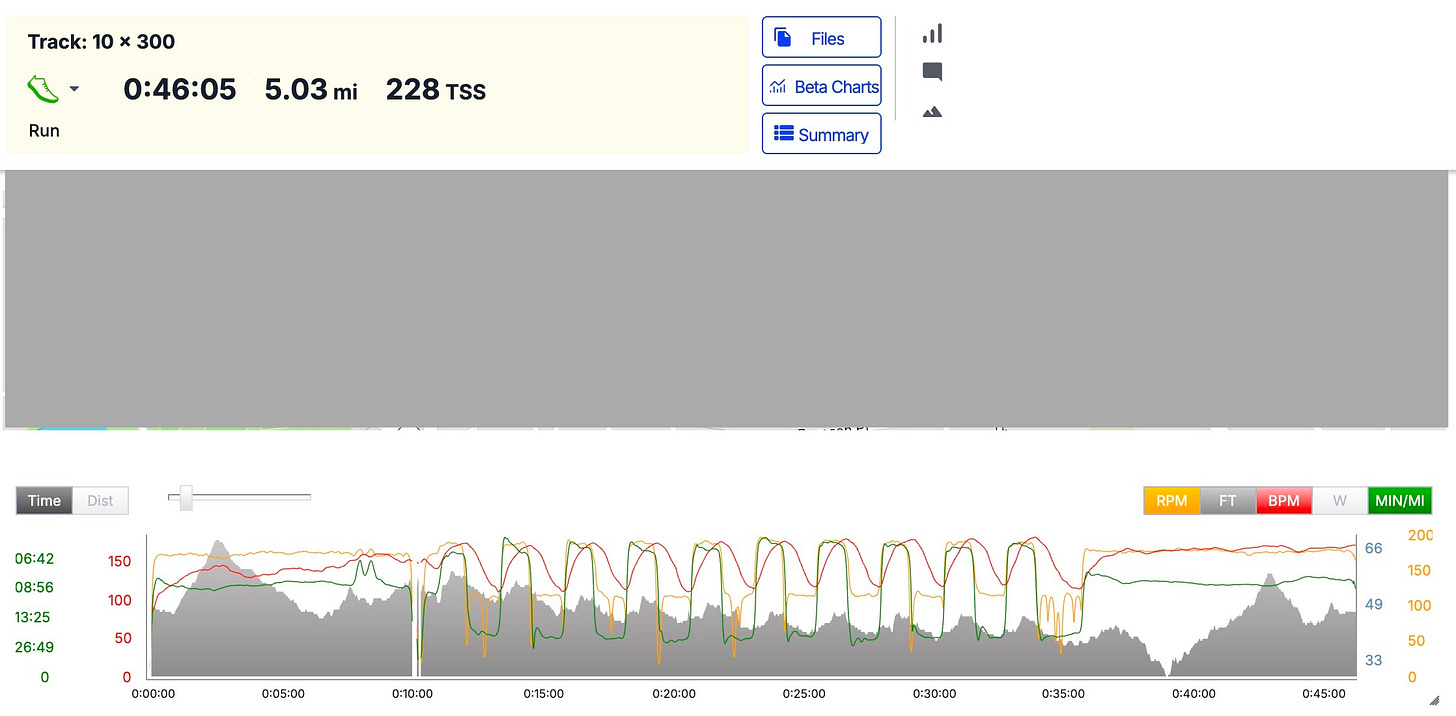We’re continuing the Run Series here at The Tribal Way. This is Chapter 7.
You can read Chapters 1 to 6 in the living Tribal Endurance eBook [HERE].
In preparing this post, I reached out to some of my most successful athletes and asked:
What has been the biggest unlock in your endurance development process?
One answer stood out.
It came from Mike Donatelli, who has made a massive transition from:
powerlifting
to Ironmans
to fast marathons
This post will dive into the core principle that helped Mike go from Complete to Compete in endurance:
Precision Pacing.
In Mike’s early days of endurance, his Ironman goals were focused on:
finishing the race
having a good time
His training focus was on learning how to swim, bike, run - and go far.
But as his endurance interests and abilities evolved, his competitive mindset (honed through high-level wrestling and powerlifting) returned.
That’s a good thing.
But it came with a trap…
The powerlifting mindset of pushing every workout to failure carried over to running.
Here’s what Mike said:
“Early on, when I first started getting into running, the biggest thing I followed was: make your hard runs hard and your easy runs easy.
But I was overshooting everything…
I’d do a Tuesday track workout and I wouldn’t even be fully recovered by Saturday.
It was really frustrating.”
As Mike put it: “Being more precise with my pacing during quality workouts” was the single biggest unlock.
Why Precision Beats Effort
Years of strength training had ingrained the belief/habit that every workout should push to (or near) failure.
Load up the bar, grind the last rep, leave nothing in the tank.
It worked in the gym.
But on the track?
It was a recipe for burnout.
Mike’s early obstacle in endurance wasn’t toughness…
It was precision.
The Trap of Training to Failure
If you push beyond the intended pace in quality sessions (and watch your form collapse, your pace fall apart, or find yourself unable to finish a workout)…
You miss the stimulus, risk injury, and tank your recovery.
Here’s a strength training example:
Picture a powerlifter who’s 1 rep bench press max is 315.
If he loads the bar up with 405 and gets it stuck on his chest before even getting 1 rep, is he getting any stronger?
No. He’s just buried himself under weight he can’t handle.
The Shift: Precision Over Effort
Once Mike started hitting target paces, everything changed:
He finished workouts strong instead of destroyed.
Recovery times shortened.
Long runs carried more rhythm, less fatigue.
And his confidence and joy as an athlete grew
And guess what?
This didn’t mean he became a robot…
Mike still did social runs with friends where the pace wasn’t perfectly dialed in.
But those were his easy days.
When it came to the “Meat of the Week” - the key, quality session - he nailed it.
And Mike isn’t the only one.
Across the team, I’ve seen the same principle unlock performance in different ways.
For Brandon Littrell, the biggest unlock in the past year was realizing that Zone 5 doesn’t mean all out.
It’s an actual training zone with a ceiling (relative to your threshold pace).
Once he respected that ceiling, he was able to repeat high-intensity sets without frying himself.
The result?
This year he completed his first 50M and 100K ultras, with his best executions of any endurance races he’s ever done.
Matt Bank learned the same thing the hard way.
He went out for a track session, overshot his pacing, and couldn’t recover between sets in the time allotted.
Instead of building fitness, the session got cut short and left him feeling defeated.
Here’s what he said:
How did he adjust?
The next week he had 10x 300s on his plan. And and he nailed it.
Different athletes. Same principle.
I shared this thought on X recently, and it ties directly into what we’re talking about here:
The point is simple:
Training by feel is valuable, but only after you’ve built the foundation.
That foundation comes from testing, learning your zones, and practicing pacing with intention.
How to Train with Precision
Here’s how you can apply the same lesson in 4 steps:
Step 1: TEST
Establish your training zones.
Do a 30 min run test, then use the Tribal Training Zone Calculator to find your HR, run pace, and bike power zones.
[Run Test details are written out inside the Calculator]
Step 2: TARGET
Know the targets of each workout.
Is this a threshold workout? Endurance? V02 Max?
You have personalized zones for each of these sessions.
Know them. Nail them.
Step 3: DIAL BACK
Here’s a Pro Tip: endurance progress does not come from forcing faster pacing…
It comes by making your existing pacing feel smoother, with better fitness and mechanics.
Step 4: REVIEW
At the end of each workout, check the metrics that matter.
For Zone 2 efforts, I check: avg. HR. max HR, avg run pace, avg bike power
For intervals, I check that my interval sets remained consistent on pace/power through all my sets
The Bigger Lesson
For lifters like Mike, the hardest part wasn’t physical - it was rewiring the mindset.
Learning that in endurance, discipline isn’t about grinding until failure.
It’s about hitting the target again and again.
As Mike summed it up: “The biggest thing I learned was not to overshoot every rep. Precision builds fitness. Going too hard just leaves you wrecked.”
That’s the heartbeat of endurance training: controlled effort, repeated over time.





